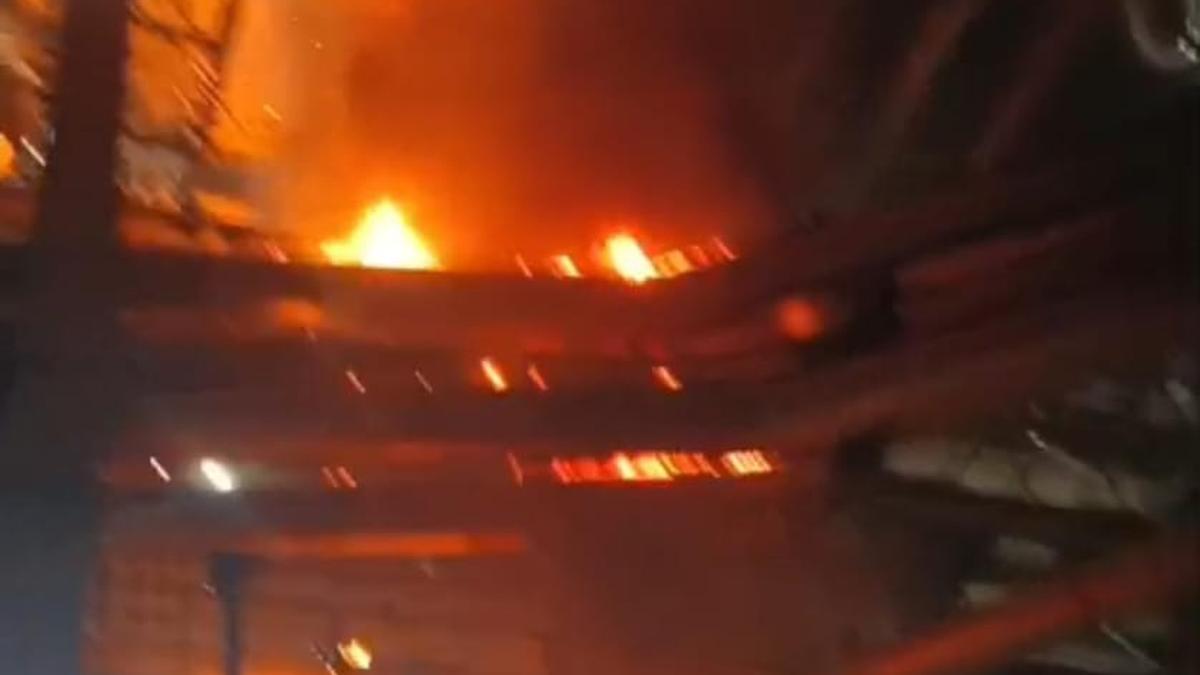‘If you’re not in an OK place, you’re just re-traumatising yourself,” says Anna Akana, who is performing her show, It Gets Darker, at the Edinburgh festival fringe this year. In it, she talks about her sister Kristina’s suicide, and how a stalker’s threats of violence drove Akana herself out of standup comedy.
Trauma-focused shows have always been a fixture at the festival. Countless plays and comedies have been moulded from it. Countless artists have felt the catharsis of channelling their darkest moments and the weight of reliving them every day.
Akana’s story has naturally been compared to Baby Reindeer, which began life at the fringe. Richard Gadd’s play, now a Netflix hit, dramatised his own experience of being stalked. But there has been serious fallout, with the woman at the centre of the story suing Netflix, prompting questions about the ethics of her exposure v Gadd’s right to tell his story.
Are writers and performers thinking more carefully about adapting their traumatic experiences into stage shows this year? James Barr is telling his story of an abusive ex-boyfriend in his new show Sorry I Hurt Your Son (Said My Ex to My Mum), which takes audiences on a journey that mirrors the tension and uncertainty of a toxic relationship. Edinburgh-based comedian Eleanor Morton, meanwhile, subtly weaves experiences of sexual assault through her show, Haunted House, which draws on the city’s spooky reputation while looking at the darker side of the fringe. “Sex predators are a lot like ghosts,” she jokes. “If a woman encounters one, no one believes her.”
Here, but also beyond the arts, there are “perverse incentives” to share your trauma, says Darren McGarvey, author of Poverty Safari and The Social Distance Between Us. He speaks from experience, having drawn on his own childhood trauma in his first book. But he didn’t anticipate the personal cost: “Once something goes public, it’s not yours any more and a portrayal of you then exists in everyone’s mind.”
This fringe, McGarvey has put on a couple of shows, Trauma Industrial Complex, exploring these incentives, as well as the rights and wellbeing of the storyteller and those entwined with their story, through conversations with academics, campaigners and performers, including Janey Godley. It’s part of a wider project, which includes a podcast and will culminate with a book. “One of the problems with lived experience discourse and culture is we’re dealing with people who could be vulnerable, yet there are not tremendous safeguarding processes in place,” he says. “If your trauma is unhealed, you will experience negative consequences directly relative to the positives.”
When Akana first attempted to talk about her sister’s death, “it used to send me into a PTSD episode,” she says. It also led to difficult audience interactions. “People would come up to me and say: ‘My father killed himself.’ It would be so abrasive and triggering, even though I was on stage talking about this.”
Years on, Akana has processed everything in therapy and discussed these experiences on her YouTube channel. There, she works towards suicide prevention – going over and over the memory has smoothed its edges and the idea of keeping her sister’s memory alive now feels joyful. “Sometimes I cry,” Akana says. “Every so often, however many times you perform it, you really feel it. But the idea that if I go out there and help one person, that’s really worth it.”
That desire drives Barr and Morton too. “Women who’ve been through similar things like to see women talking about it on stage, because they might not get to talk about it in their own life,” Morton says.
Barr feels we rarely see discussion of abuse within same-sex relationships. “As well as it being for people that are survivors, and giving me space to figure it out, it was also to force people to take accountability,” he says. Initially, he wasn’t sure comedy was the right medium for his story, which includes harrowing moments of physical abuse. But he noticed the classic rhythms of standup mirrored elements of abusive relationships – good times punctuated by suspense and deceit. By creating this experience for the audience, he hopes that: “If you can see what abuse feels like, you won’t stand for it.”
Morton discusses an award-winning comedian who tried to force his hands where they weren’t wanted. Her experience took place around a decade ago, so she has distance from it. But recently a friend revealed that an influential fringe promoter had attacked her while she slept. Not just her: multiple women. He was at the fringe last year, and Morton remembers “not being able to believe he had the audacity to turn up”. She realised many industry friends had similar experiences with different people.
“The fringe is haunted by these men who keep coming back here every year,” Morton says. She’s using the show to haunt them back. “Almost as if to say: I know. If you’re going to come to my home town and do things like that, I’m going to call you out.”
Baby Reindeer raised questions about the wider responsibilities of storytellers. “There was a point, during the fallout, when I started to think: what’s it going to take for the public to realise these are real people?” says McGarvey. “It was this rapacious appetite for the lurid details of some really dark situations.”
When McGarvey shared his own childhood experiences, family members entwined with his story felt the impact. “I’m not responsible for how other people interpret things. But I feel responsible to people close to me, to make sure they’re in the loop,” he says. “How do they feel about being exposed like this?”
Morton has chosen not to name the men who assaulted her and her friends, partly because she wants to discuss it as a systemic issue, one that’s still part of the fringe, and partly with an eye on legal repercussions. Barr doesn’t name names either and he sought legal advice. “It’s safer here because you’re not on Netflix [showing] millions of people,” he says.
Both discussed their shows with loved ones, so none of the contents would be a shock. Barr invited his to a scratch performance and asked if they thought the show was a wise idea: “I bolstered my confidence in doing it by having the support of my friends and family.”
Akana felt comfortable naming her stalker and sharing details of what he put her through – turning up at her home, sending unsettling gifts, death threats – because she had secured a restraining order, so it’s all a matter of public record. But ethically? “In earlier versions there was more resentment and anger towards him. But I was like: he’s someone who’s mentally ill and that’s also not his fault.”
When talking about Kristina, her responsibility was towards her family. “My parents had never talked about my sister’s suicide with me until I told them I was doing a special,” she says. They opened up and checked facts together.
Everyone should be aware of the limitations of their own story, and their power as a narrator. “We fill in a lot of gaps; we allocate intent and culpability to other people,” says McGarvey. “Sometimes it’s justifiable, sometimes it’s speculation. With human beings, there are a lot of grey areas.”
All feel strongly that artists should be able to tell their own stories. Thinking about Baby Reindeer, Akana says: “That was a true story and [Gadd] was a victim. To a certain extent, if we’re silencing him, are we silencing victims?”
Barr agrees. “If I didn’t speak about it, I felt as if I would be the same person I was in that relationship: weak, silenced, hiding,” he says.
“What is art apart from people telling their own story?” says Morton.
It’s crucial to find the right time and place to share your traumatic experiences, says McGarvey – what’s appropriate in therapy wouldn’t necessarily be appropriate on stage. “It’s important to share an experience, but it’s important to share it to an appropriate depth, given the context,” he says.
Barr prepared with the help of therapy, the support of friends, and by teaming up with Madeleine Parry, director of Hannah Gadsby’s Netflix special, Nanette. Morton says she has witnessed people treating performance like therapy in the past, bringing raw experiences to stage when they clearly weren’t ready. “You want to present an image of vulnerability and realness, but it is theatre and you do need to have that layer of distance,” she says. “Don’t look at anything that’s going to make you have a panic attack in the middle of the show.”
Is there pressure for artists to excavate their trauma? “I don’t think there is a pressure, but I think it’s where our most powerful art comes from,” says Barr. “You connect with people when you’re telling the truth.”
And truth can be cathartic. “I hope everyone is able to take their trauma and make something constructive out of it,” says Akana. “Because otherwise you just have trauma.”
Anna Akana: It Gets Darker is at Pleasance Courtyard until 24 August. James Barr: Sorry I Hurt Your Son (Said My Ex to My Mum) is at Underbelly Bristo Square until 25 August. Eleanor Morton: Haunted House is at Monkey Barrel Comedy until 25 August.








![Best Weight Loss Supplements [2022-23] New Reports!](https://technologytangle.com/wp-content/uploads/2022/12/p1-1170962-1670840878.png)




